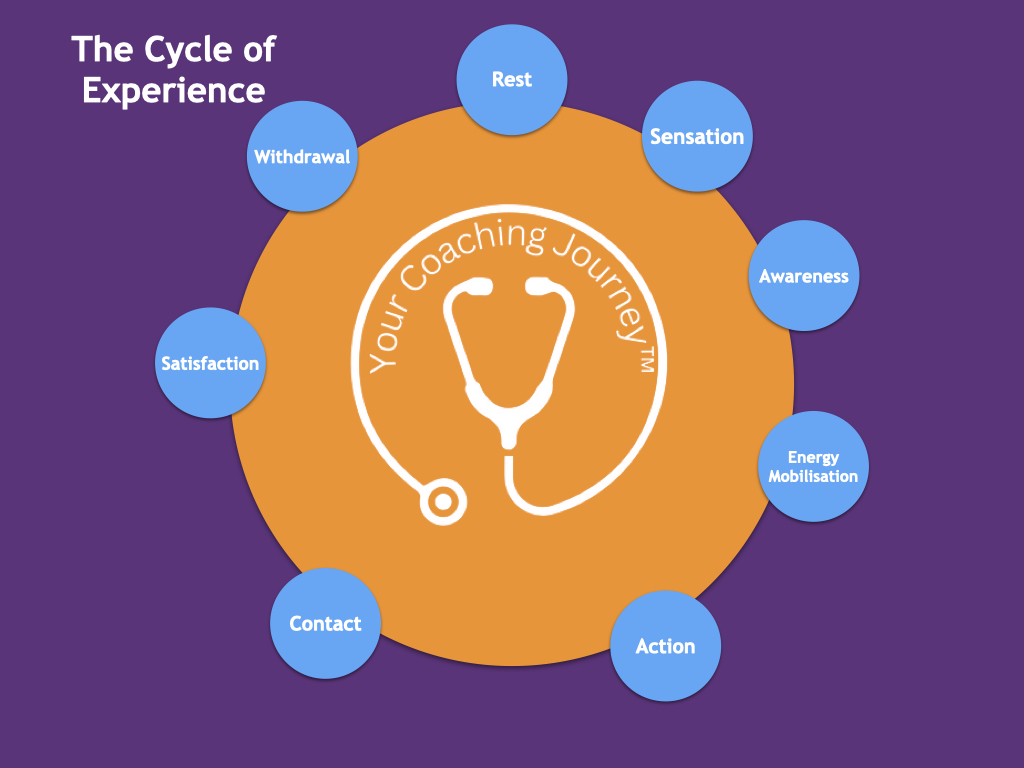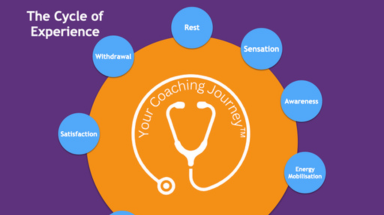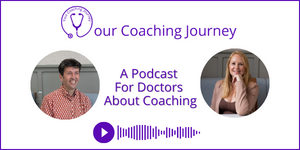Prefer to listen?
This blog post forms the basis of a podcast on our new coaching model, which you can listen to here.
What Is The Gestalt Cycle of Experience?
Gestalt is all about paradoxical change and how we encounter the experiences we have. Within the Gestalt Approach is model called the Cycle of Experience.
This model helps us to understand the extent to which people get in their own way of bringing about change, the unconscious barriers that stop them moving forward.

Let’s explore each of the elements starting at the beginning:
REST
At this point on cycle nothing in particular is going on, it maybe a space of daydreaming, a creative space, but you’re just at rest. This is often referred to as the fertile void.
This is a space where we’re just ready and waiting for a new experience to take our interest.
SENSATION
Then, there’s a sensation of some description, something is happening for us. It may be something we’re noticing in our body that we might not have full awareness of, and we don’t know what it means, but there’s some change in our body. Or it might be something around us that’s changing or we’re noticing, but again, maybe on an unconscious level, it’s not really coming into our full awareness, but we’re just aware something’s out there. It could be a sense of unease, a feeling of a discomfort, but we’re not really thinking about it on a conscious level.
AWARENESS
This is where we become consciously aware of that sensation. We know it exists and what it relates to, and that something is happening. We might be experiencing something new, some new thoughts or feelings, and we’ve started to engage with whatever it might be. It could be a problem we’re facing, or it might be a new desired outcome.
MOBILISATION
This is the point where we actively start exploring what it is that’s come into our awareness. We might not have given it a lot of thought before, we’ve just known it was there. But at this point, we actually start to explore it. We start to mobilise our internal resource and start to move towards whatever it is. We might start to consider our options or to scenario plan.
ACTION
This is where we start actually making plans, gathering resources, putting everything into place, preparing for whatever it is that’s about to happen, and actually taking some action. We might not be doing the thing that we’re going to do, but we will start to put things in place. The mobilisation is the thinking about what we’re going to put in place. The action is starting to put things in place.
CONTACT
This is when we’re actually engaging with whatever it is that’s at the centre of that experience. For example. it could be if someone was thinking of taking our transformational coaching diploma, the action stage is the booking themselves onto it, planning their time, and getting ready for it. The actual course itself is the final contact.
SATISFACTION
This is where the experience has come to an end. We’ve achieved what we wanted to achieve. We feel satisfied with experience, we’ve solved the problem, we’ve reached our desired outcome. Whatever it is that we’re working towards, it’s over and we feel good about it. Perhaps, you’ve finished our workshops, and submitted everything we need to submit for our transformational coaching diploma assessment.
WITHDRAWAL
The final stage is the withdrawal stage, where that experience is over. We’ve had that sense of satisfaction, and then we withdraw back to that rest place. We’re letting go of that experience, it’s all done and dusted, and we withdraw and allow for a new experience to come.
And that completes a gestalt.
How Can We Use The Cycle of Experience In The Coaching Room?
The Cycle of Experience is really useful in the coaching room because it explores what internal processes might get in the way at each of those stages.
If we consider someone who’s thinking of pursuing something like a coaching qualification at the beginning it might be that they’ve got no idea about coaching at all and the possibility of training to be a coach, but something is not quite sitting right in terms of their professional development. They’re starting to think about there’s something coming up for them that, perhaps ‘I could be doing more with my life’ or ‘I don’t want to carry on being a GP full time’ or simply I want to learn something new’
It’s just the sensation and it might be that that sensation gets suppressed. That person starts thinking, ‘I’m a GP. What am I thinking about? I need to earn money, I need to pay the mortgage, I just need to carry on being a GP. It’s what I trained for, it’s what I’m educated for. I’ve spent years training. I’ve invested a lot of time and energy into being a GP, what am I thinking about?
So they’ll just suppress that sensation that they’d like to be doing something different. The suppression of that initial stage is a barrier that might get in the way of someone making a change, whatever that change might be.
In the coaching room we have time and space to talk through what’s going on for the coachee, and if there is that sense of the sensation or restlessness and that they’re looking for something to change in their lives, we can start to explore what that might be. The suppression of that sensation might be stopped because they actually start talking about it.
Often when we finally get the chance to say something out loud, we realise our true thoughts or feelings. So, the act of coaching and the act of someone saying it out loud, exploring their own thinking can be useful.
In terms of coaching, we can really explore what’s going on for them, what their situation is, what their hopes and dreams are. And it might be that in exploring their situation with them, we bring into their awareness what it is they really want to be thinking about.
At the awareness stage, avoidance might occur, limiting beliefs might get in the way of people taking action, so they might avoid doing anything about it. It’s useful for us as coaches to explore these with our coachees, and hopefully, if we can explore it in a way that allows them to stop the avoidance, we can move them to that point of mobilisation so they’re actually thinking about how they might do what they want to do.
They can think about what steps they might take, perhaps ideas of who they can talk to who has perhaps already done a course?
At the awareness stage it can also be useful to spend some time really exploring what’s right for them rather than rushing into mobilising. A lot of people do rush into action and, for some, it would be better to sit and do more awareness raising.
This is a place, however, that we can get stuck. Some fear may come up at this stage as well, especially if they are making a big change to their life, and this feed into that indecision. Paralysis by over-analysis or procrastination may also keep us stuck at this point. In the coaching room we can support the coachee in exploring those options and making a decision that’s right for them. And when we do that we can then start working with them to plan and prepare and see how they’re going to move forward.
Once we get to the final contact, obviously we’ve moved to the point of engaging with the heart of the experience, which is great news! Let’s imagine then that someone has completed their diploma. It’s all done, we should get a sense of satisfaction. And perhaps a celebration.
And where sometimes people get stuck here is not giving themselves the time and the space to celebrate, to feel satisfied with what they’ve done. They might actually not allow themselves a satisfaction by sabotaging the end result. They might just not hand in their final assignment, but also they might minimise or dismiss the importance of achieving what they have achieved.
In the coaching room, therefore, we might be exploring how the coachee could celebrate, what they could do to mark the occasion.
When we come to round to that point of withdrawal, then quite often people might not let go. We don’t have closure. If we don’t get to that point of closure, then that doesn’t allow for that rest point and the fertile void of allowing new experiences to come. Again, in the coaching room, we can talk through with people why they’re not ready to let go of something and recognize that something has come to a natural end.
The Gestalt Cycle of Experience isn’t a coaching model, it’s a model of change. It’s useful in coaching to help coachee’s recognise moving through those different stages and experiences, but that they might get stuck at times and that’s perfectly normal and we have to expect that. Part of our role as a coach is to help them become unstuck and to start flowing through that cycle of experience more smoothly and for it to reach a conclusion and the Gestalt to be complete.
Regardless of whether you share this cycle of experience with your client or not, having a knowledge of it yourself will really help you as a coach when you find people who are stuck in a process.
To find out more about our Doctors’ Transformational Coaching Diploma click through here



